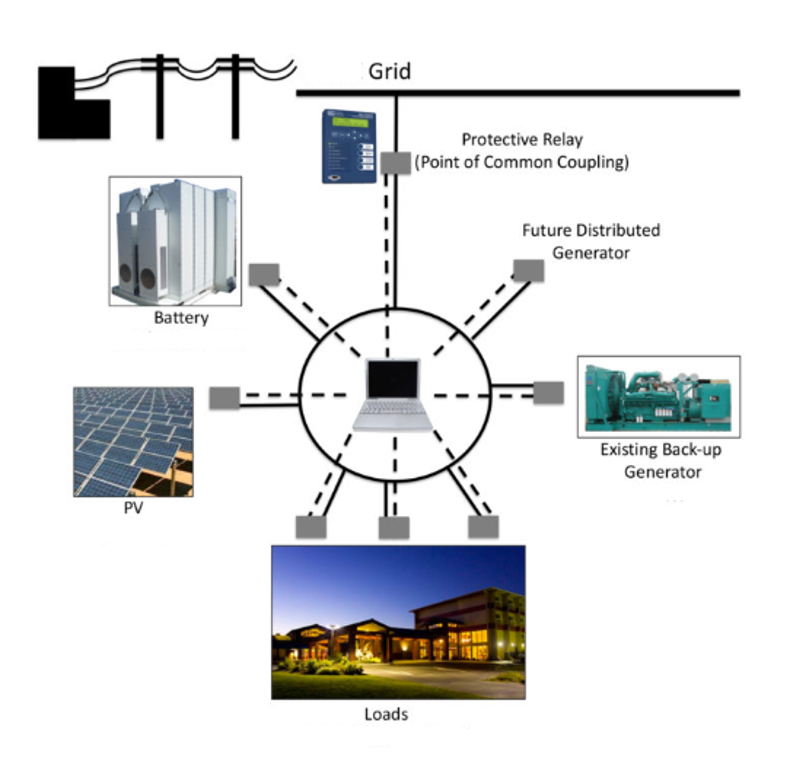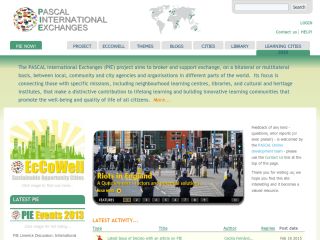Empowering Urban Sustainability: The Role of Microgrids in Modern Urban Systems | The Urban Lens Newsletter
It’s been interesting and informative to observe the so-far-unsuccessful local efforts to develop a microgrid in the Cleveland area over the past several years. Here is some of what I’ve learned and come to understand about the project.

Microgrids are decentralized energy systems that offer increased reliability, efficiency, and sustainability by generating and distributing power at a local level. They can be used to power a specific area, such as a neighborhood, community, or even a single building. In Cleveland, the area selected was near downtown, and the motivating idea was to stimulate economic development, as well as contribute to urban sustainability, resilience, and improved energy management.
Microgrids consist of a variety of distributed energy resources, such as generators, renewable energy sources (like solar panels and wind turbines), energy storage systems (such as batteries), and advanced control systems which operate either in conjunction with or independently of a main power grid. Each microgrid is tailored to meet specific local energy needs while contributing resilient energy infrastructure and improving sustainability. Their key feature is their ability to reliably generate and distribute electricity locally.
The United States has seen the development of numerous successful microgrid projects. All have depended upon successful collaboration between local communities, industry stakeholders, and government entities. Coordinated effort among a range of stakeholder groups has been necessary to address technical complexities, navigate regulatory landscapes, and secure the diverse expertise and resources necessary for successful design, implementation, and operation.
In New York City, for instance, the Bronx Zoo's microgrid is designed to provide backup power during outages and emergencies that threaten animal habitats and security systems. The Brooklyn Microgrid is a community-based initiative that allows local residents to buy and sell solar energy among themselves using blockchain technology.
In Humboldt County, California, the Blue Lake Rancheria microgrid is a tribal community project that integrates solar panels, a biomass facility, and energy storage. The idea is to enhance energy resilience for the community and serve as a model for sustainable development.
Also in California, the Alameda Point Advanced Energy Microgrid is a project aimed at developing a resilient and sustainable energy system for a former naval air station. The microgrid incorporates solar power, advanced control systems, and energy storage to enhance energy reliability and efficiency.
Peachtree Corners, a city in Georgia, has implemented a microgrid as part of its autonomous vehicle and smart city testing facility. The microgrid integrates solar panels, battery storage, and electric vehicle charging stations to support the city's innovation initiatives.
Princeton University has a microgrid that integrates solar panels, combined heat and power (CHP) systems, and energy storage. It enhances the university's energy resilience and allows independent operation during grid outages.
These and other currently-operating microgrids offer benefits in addition to increased energy resilience and the integration of renewable energy sources. Some, for instance, were designed with advanced control systems to optimize locally generated energy distribution and consumption, enhance overall energy efficiency, and reduce wastage, all the while helping local areas decrease their carbon footprint and dependence on fossil fuels.
Microgrids can also be advantageous for activities or firms whose products depend upon having uninterrupted access to electric power. The advantages stem from their ability to operate independently of the main power grid (in “island mode”) in the event of a power outage or disruption to the main grid. This ability ensures that the microgrid can continue to supply power to local consumers even when the broader grid is experiencing outages.
This ability to operate independently of the main grid is especially advantageous in regions such as the Midwest, in which the electric power infrastructure is so old and decrepit.
In Cleveland, economic development-related research on the monetary value firms put on lost load found that uninterrupted access to electric power would be of especial value in industries that rely upon digital information. For example, microgrids would have special value for firms in the IT industry (encompassing hardware, software, networking, and cybersecurity) as well as those in finance and banking, healthcare, telecommunications, e-commerce and retail, media and entertainment, and advanced manufacturing.
This all having been said, microgrid projects also come with certain “down” sides. Insofar as the Cleveland project is an indicator, this is where they can get challenging.
For one, microgrid infrastructures can be expensive, requiring a significant upfront investment. For example, the initial cost estimate for the modest project located near downtown Cleveland was, about five years ago, on the order of $100,000,000.00.
For another, integrating a microgrid seamlessly with a main power grid can be technologically challenging, and regularly monitoring and maintaining it can require a range of specialized expertise. Also, more than a few jurisdictions (such as Cleveland) have an abundance of regulatory and policy barriers to the construction and integration of microgrids, related to factors such as grid interconnection, feed-in tariffs, and net metering.
And then, of course, there are individuals and entities with vested financial interests in maintaining the current status-quo. Microgrids enable more consumers to generate their own power locally. This effectively decreases the demand for electricity from traditional, large-scale, centralized generators, utilities, and main power grid owners and operators, impacting their revenue and requiring them to adapt their business strategies. As a consequence, stakeholders heavily invested in traditional energy sources such as these may go to considerable lengths to actively resist the adoption of any technology such as a microgrid that supports the shift towards decentralized and renewable energy.
Indeed, to my mind, the most pronounced take-a-way from the Cleveland microgrid project to date is that once a large-scale system is in place, such as the centralized electric-grid system built up in Ohio over the 20th century, there will always be vested interests who will actively, if quietly, oppose change to that system, regardless of how clearly and convincingly society’s best, longer-term interest is at stake.
Microgrid projects thus stand to raise a social dilemma. By requiring collaboration between communities, industry stakeholders, and various levels of government, they place individuals and groups in interdependent choice situations in which the maximization of narrow short-term self-interest by some participants yields outcomes that leave society overall worse off than would otherwise be possible through cooperation, negotiation, compromise, and well-designed public policy and regulation.
To thus acknowledge that microgrid projects engender this social dilemma is also to recognize that society overall has a legitimate, long-term collective interest in these projects. And it is furthermore to affirm that total social costs and benefits—and not only private costs and benefits—are at stake.
Even considering total social costs and benefits, the net benefits of microgrid projects will probably not invariably outweigh the costs for each and every proposed project. It seems more likely that the costs and benefits will vary from project to project, depending on factors such as the specific project, location, technology choices, and regulatory environment.
But this much is clear. Unless the long-term social benefits stemming from increased resilience, efficiency and sustainability are systematically considered and factored into decisions about whether to move forward or not with any given project, the benefits will almost certainly be under-estimated, and projects that would otherwise more forward and bear fruit are less likely to do so.
A question remains about whether it will be possible to resolve the social dilemma and implement the microgrid project in Cleveland. The answer at this point is anyone’s guess. I, for one, hope so. But in any case there is no doubt that a great deal is at stake.
Bill Bowen
Source: Substack
 Printer-friendly version
Printer-friendly version- Login to post comments







